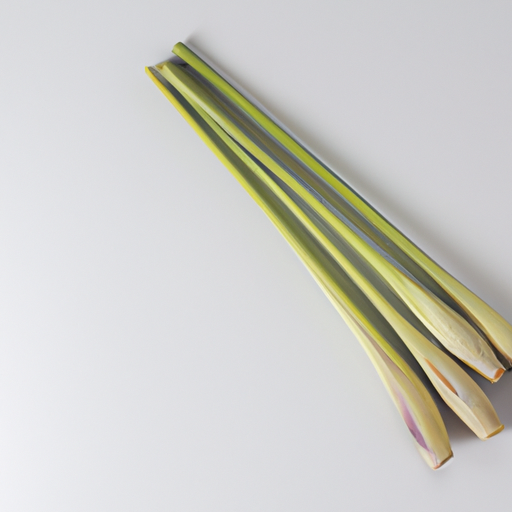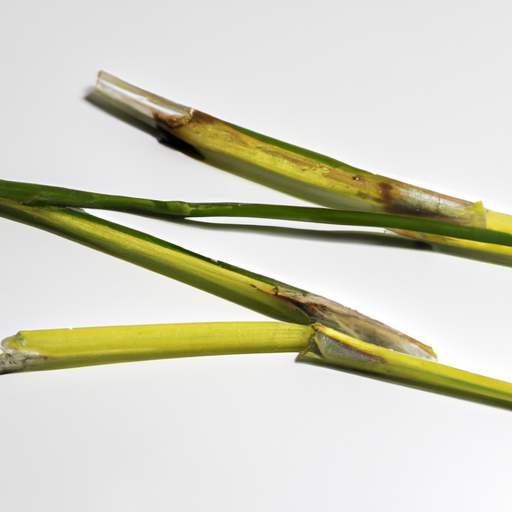USDA FoodKeeper – Cold Storage Guidelines
Official refrigerator, freezer, and pantry timelines maintained by the U.S. Department of Agriculture.
Visit USDA FoodKeeperWith its vibrant citrusy aroma and distinctive flavor, this herb is a fantastic addition to both savory and sweet dishes. To keep it fresh and zesty, store it in the fridge, where it can last up to a week—just remember to use it within three days past its expiry for optimal taste without any worries!
30 most common foods with instant answers. Print it and stick it on your fridge—completely free! Want more? Upgrade to the complete guide with 70+ foods.


Fridge
4°C (39°F)
Wrap in damp paper towel and store in a plastic bag
7 days
Yellowing or wilting leaves, loss of fragrance
Tea brewing, flavoring in dishes
Lemon zest or lemon balm
Sure thing! So, expiration dates and best quality dates are different when it comes to Lemon Grass. The expiration date is the date until which the Lemon Grass is deemed safe to eat. Once it's past this date, it might not be safe due to spoilage or bacterial growth. On the other hand, the best quality date indicates when the Lemon Grass is at its peak flavor and freshness. Eating it after this date doesn't necessarily mean it's unsafe but the flavor and texture might not be as good. For example, if the expiration date on your Lemon Grass is tomorrow, it's best to use it by then to ensure it's safe to eat. However, if the best quality date is a few days past and the Lemon Grass still looks and smells fine, it's probably okay to use, although the flavor might not be as vibrant. Personally, I tend to follow the expiration dates for safety reasons, but I might still use the Lemon Grass a day or two after the best quality date if it looks and smells fine. It's all about using your best judgment!
To determine if lemongrass has gone bad, look for discoloration or mold on the stalks. Fresh lemongrass should have a strong citrusy scent; if it smells musty or off, it is no longer fresh. Additionally, fresh lemongrass should be firm and not slimy or mushy to the touch.
Hey there! Let's chat about food safety when it comes to enjoying delicious Lemon Grass dishes. While this herb is flavorful and aromatic, there are some risks to be aware of. One common risk is foodborne illness. Lemon Grass, like any other fresh produce, can harbor bacteria if not handled properly. Symptoms of foodborne illness include nausea, vomiting, diarrhea, and stomach cramps. Not fun at all! To keep things safe, make sure to wash your Lemon Grass thoroughly before using it in your recipes. Store it in the refrigerator to maintain freshness and prevent bacterial growth. When cooking with Lemon Grass, ensure it reaches the appropriate temperature to kill any harmful bacteria. Another tip is to avoid cross-contamination by using separate cutting boards and knives for raw meat and fresh produce like Lemon Grass. This simple step can go a long way in preventing foodborne illnesses. So, enjoy your Lemon Grass dishes, but remember to handle it with care to keep yourself and your loved ones safe and healthy!
Hey there! Let me share some handy tips for storing lemongrass! To keep it fresh longer, store lemongrass in the refrigerator. Wrap the stalks in a damp paper towel and then place them in a resealable plastic bag. This will help maintain the moisture levels and prevent wilting. Another cool trick is to freeze lemongrass for extended storage. Simply chop the lemongrass into smaller pieces and store them in an airtight container or a freezer bag. This way, you can have lemongrass ready to use for soups, curries, and stir-fries anytime. If you're growing lemongrass at home, consider drying it for later use. Hang the stalks upside down in a cool, dry place until they are dried out completely. Then store the dried lemongrass in an airtight container. Personally, I love using frozen lemongrass in my homemade Thai curry pastes. It's so convenient and retains its flavor well. Give these storage hacks a try and make the most out of your lemongrass!
Hey there! Let's talk about lemongrass - the fragrant and versatile herb that adds a unique touch to many dishes. Did you know that lemongrass has been used for centuries in Asian cuisine for its lemony flavor and citrusy aroma? It's a staple in Thai, Vietnamese, and Indonesian cooking. Beyond its culinary uses, lemongrass also has a rich history of medicinal and cultural significance. In traditional medicine, it's often used to aid digestion, reduce inflammation, and even as a natural insect repellent. How cool is that? And get this - lemongrass is believed to bring good luck and ward off evil spirits in some cultures. In India, it's used in religious ceremonies and rituals to purify the mind and body. Next time you use lemongrass in your cooking, think about all the history and culture packed into that little herb. It's not just a flavor enhancer; it's a symbol of tradition and wellness. Enjoy cooking with lemongrass, and maybe try incorporating it into a new dish to explore its full potential!
Lemon Grass stored at room temperature for a day may still be safe to consume if it appears fresh and has no signs of spoilage. However, to maintain its quality and extend its shelf life, it's best to store it in the fridge. Always check for any unusual odors, discoloration, or sliminess before using.
Once opened, Lemon Grass should ideally be used within 2-3 days for optimal freshness and flavor. Store the leftover Lemon Grass in an airtight container in the fridge to retain its quality. If it shows any signs of spoilage like a slimy texture or off smell, it's best to discard it.
The type of container can influence the shelf life of Lemon Grass. To prolong its freshness, store Lemon Grass in a breathable container or bag in the fridge. Avoid storing it in sealed plastic bags as they can trap moisture and promote spoilage. Opt for perforated bags or paper towels to maintain optimal conditions.
It's generally safe to store Lemon Grass next to other herbs or produce in the fridge. However, be cautious with high-ethylene-producing fruits like apples and bananas, as they can accelerate the ripening process of herbs. To prevent cross-contamination, keep Lemon Grass in a separate compartment or a sealed bag to maintain its freshness.
Cooking Lemon Grass does not significantly impact its shelf life. However, once cooked, its texture and flavor may change. Leftover cooked Lemon Grass should be refrigerated promptly and consumed within 3 days to ensure food safety. Properly storing cooked Lemon Grass in a sealed container helps maintain its quality.
Lemon Grass typically lasts longer when stored in cooler temperatures, such as during winter months. Warmer temperatures can accelerate its deterioration, shortening its shelf life. To extend the shelf life of Lemon Grass during summer, store it in the coldest part of the fridge and ensure proper ventilation to prevent moisture buildup.
When transporting Lemon Grass for a few hours, it's crucial to keep it cool to maintain its freshness. Use a cooler bag or insulated container with ice packs to regulate the temperature. Avoid leaving Lemon Grass in direct sunlight or in a hot vehicle. Upon reaching your destination, promptly refrigerate the Lemon Grass to preserve its quality.
30 most common foods with instant answers. Print it and stick it on your fridge—completely free! Want more? Upgrade to the complete guide with 70+ foods.
Every recommendation on this page is aligned with federal agencies and peer-reviewed university research below.
Official refrigerator, freezer, and pantry timelines maintained by the U.S. Department of Agriculture.
Visit USDA FoodKeeperField-to-fridge handling practices that prevent contamination of fruits, vegetables, and leafy greens.
Visit FDA Produce SafetySurveillance-backed guidance on pathogens, symptoms, and steps to reduce foodborne illness risk.
Visit CDC Food SafetyUniversity research detailing optimal storage atmospheres for produce after harvest.
Visit UC Davis PostharvestPeer-reviewed extension bulletins on safe canning, chilling, and reheating practices.
Visit Penn State ExtensionNeed deeper reading? Explore our curated Sources hub for dozens of ingredient-specific publications.
Scan your food directly and get instant safety info using our AI-powered camera feature.
We have recipes that can help you safely use lemon grass past its expiration date!
View Recipes →Grains & Pasta
View expiration date and storage guide →
Meat & Poultry
View expiration date and storage guide →
Dairy Products
View expiration date and storage guide →
Fruits & Vegetables
View expiration date and storage guide →
Dairy Products
View expiration date and storage guide →
Seafood
View expiration date and storage guide →
Meat & Poultry
View expiration date and storage guide →
Dairy Products
View expiration date and storage guide →
Dairy Products
View expiration date and storage guide →
Important: These are general guidelines based on authoritative sources listed above. Always use your best judgment and when in doubt, throw it out. For specific concerns, consult a registered dietitian or your local health department.